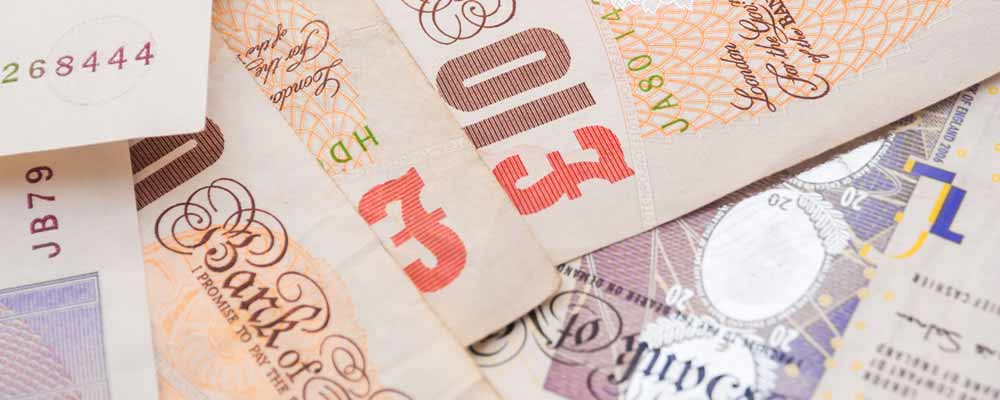Confidence in the Pound picked up at the start of the week thanks to a surprisingly strong Manufacturing PMI.
- Bullish UK Manufacturing PMI shored up Sterling – Investor confidence in resilience of domestic economy boosted
- Euro weakened in spite of solid German employment data – Single currency still weighed down by political worries
- Markets maintained positive ‘Greenback’ outlook – Hopes of further Fed rate hikes still high
- GBP exchange rates could trend higher on solid Services PMI – Robust service sector data could encourage greater Pound demand
While the Euro struggled to find support, in spite of positive domestic data, the US Dollar remained on a stronger footing against many of its rivals.
GBP EUR Exchange Rate Trended Higher in Spite of Bullish German Inflation
In another upside surprise the German Consumer Price Index rose sharply on the year in December, strengthening from 0.8% to 1.7%. This encouraged speculation that the ECB could take a more hawkish view on monetary policy in the near future. However, the GBP EUR exchange rate remained on an uptrend in spite of this, making gains in the region of 1.17.
Demand for the US Dollar remained strong, meanwhile, with the latest ISM manufacturing index bettering expectations. As a result the GBP USD exchange rate remained in a slump around 1.22.
(Previously updated at 12:44 on 03/01/2017)
Pound (GBP) Exchange Rates Boosted by Bullish Manufacturing PMI
December’s UK Manufacturing PMI bettered expectations to strengthen from 53.6 to 56.1, allaying fears of a renewed slowdown in domestic economic activity. This signalled the measure’s highest level since June 2014, offering further evidence of the UK shrugging off the initial negative impact of the Brexit vote. As a result the Pound (GBP) rallied on Tuesday morning, making gains across the board in spite of an ongoing lack of clarity in the government’s Brexit plan.
If the corresponding Construction and Services PMIs also prove positive then GBP exchange rates could be encouraged to extend this positive momentum further. A strong showing from the service sector in particular could boost confidence in the outlook of the domestic economy, even if the terms of the UK’s exit from the EU remain unclear. Even so, researchers at RBS maintain a positive outlook for the Pound, in the short term at least, noting:
‘We believe that currently investors have priced in a “Hard Brexit”, with no access to the European Single Market on exit from the EU. While a hard exit with an even more serious impact on the economy can ultimately be priced, we believe that this requires more information that will only become known over many quarters, if not years in the future. For now, we believe the distribution of negotiable outcomes imply that current market sentiment is too extreme.’
Strong German Unemployment Data Failed to Dent GBP EUR Exchange Rate
The finalised raft of Manufacturing PMIs for the Eurozone offered some support to the Euro (EUR) at the start of the week, particularly as the German result saw a minor upwards revision. With the manufacturing sector continuing to perform well across the currency union, the appeal of the single currency improved. Even so, this positive momentum proved short-lived despite positive German labour market data. While the unemployment rate held steady at 6% in December this was not enough to encourage greater demand for the Euro, given uncertainty relating to the domestic political outlook.
Demand for the Euro could improve in response to the latest German inflation data, however, with forecasts pointing towards a solid increase in domestic inflationary pressure. While even a strong showing here is unlikely to prompt the European Central Bank (ECB) to return to a hawkish policy outlook, it would nevertheless encourage greater confidence in the single currency. If the measure fails to impress then the Pound Euro (GBP EUR) exchange rate could extend its uptrend, especially if worries over domestic political developments mount once again.
Fed Rate Hike Hopes Continued to Support US Dollar (USD)
A general decline in market risk appetite helped to shore up the US Dollar (USD) on Tuesday, with investors still inclined to favour the safe-haven asset in spite of a recent run of disappointing domestic data. Odds continue to point towards the Federal Reserve raising interest rates multiple times in the coming year, maintaining the bullish outlook of the ‘Greenback’. While there is some persistent degree of uncertainty surrounding the likely policy direction of president elect Donald Trump, markets continue to expect an increase in infrastructure investment and fiscal stimulus. However, if there are any signs that these promises may not be delivered then the Pound US Dollar (GBP USD) exchange rate could regain some of its recent losses.
Forecasts suggest a modest uptick in December’s ISM manufacturing index from 53.2 to 53.7, which would offer further indication of the US economy’s robustness. If the manufacturing sector continues to demonstrate resilience this would increase the impetus for the Fed to tighten monetary policy further, to the benefit of the ‘Greenback’.
Current Interbank Exchange Rates
At the time of writing, the Pound Euro (GBP EUR) exchange rate was trending bullishly at 1.18, while the Pound US Dollar (GBP USD) pairing was trending narrowly around 1.22.



